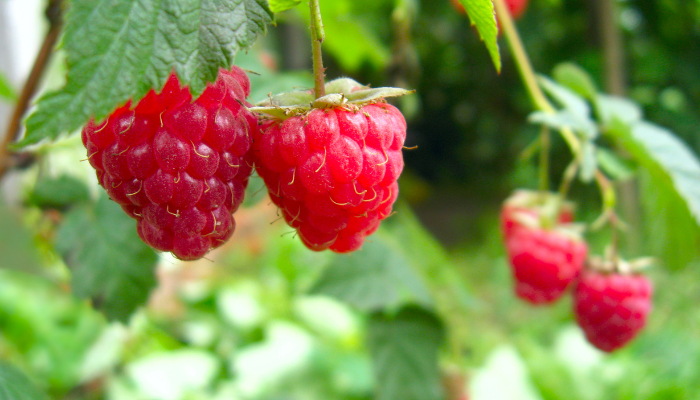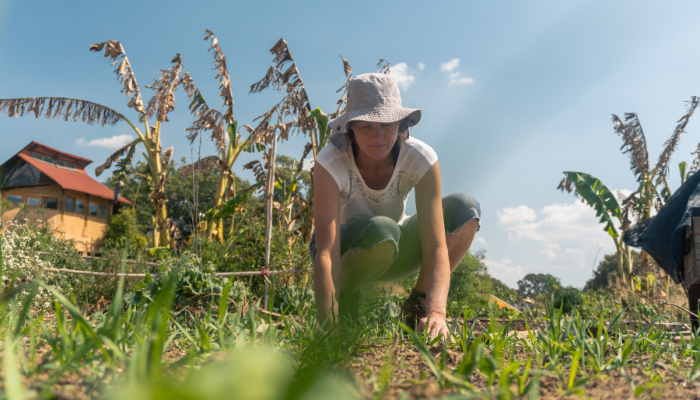What Type of Fruit is a Cantaloupe: A Clear and Knowledgeable Answer
What Type of Fruit is a Cantaloupe?
If you’re wondering what type of fruit a cantaloupe is, you’re not alone. The answer may surprise you as there is some debate surrounding the classification of this popular melon. While some people consider it a fruit, others argue that it is a vegetable.
Cantaloupes are a type of muskmelon that are typically eaten as a fresh fruit, in salads, or as a dessert with ice cream or custard. They have a tan-green rind that is covered in a spiderweb-like pattern, and inside, the flesh is bright orange and sweet. The seeds are also edible and can be dried for use as a snack.
Despite its sweet taste and juicy texture, some people argue that the cantaloupe should be classified as a vegetable because it grows on a vine like other vegetables. Others argue that the presence of seeds and the fact that it is commonly eaten as a fruit make it a fruit. So, what type of fruit is a cantaloupe? The answer may depend on who you ask.
What is a Cantaloupe?

Cantaloupe is a type of fruit that belongs to the muskmelon species (Cucumis melo) from the family Cucurbitaceae. The fruit is also known as rockmelon, sweet melon, or spanspek (Southern Africa) and is classified as a melon. Cantaloupes range in mass from 0.5 to 5 kilograms (1 to 11 lb).
Interestingly, the melon that is commonly referred to as a “cantaloupe” in North America is not actually a true cantaloupe, which is more common in Europe. In fact, the “cantaloupes” in North America are a type of muskmelon. True cantaloupe has a rough, warty rind and is not widely grown or commercially available in the US and Canada.
Cantaloupes have a round or oblong shape and a ribbed outer skin that ranges in color from green to tan. The flesh inside can vary in color from orange to yellow and is sweet and juicy. Cantaloupes are typically eaten fresh as a snack or used in fruit salads, smoothies, and desserts.
One cup of raw cantaloupe balls (177g) provides 60 calories, 1.5g of protein, 14.4g of carbohydrates, and 0.3g of fat. Cantaloupe is an excellent source of vitamin C, vitamin A, and potassium. It also contains some fiber, folate, and other essential vitamins and minerals.
In summary, cantaloupe is a type of muskmelon that is commonly referred to as cantaloupe in North America. It has a ribbed outer skin that ranges in color from green to tan and sweet, juicy flesh that is typically eaten fresh. It is an excellent source of several essential vitamins and minerals and is a nutritious addition to any diet.
Origin and History

Cantaloupe is a type of fruit that belongs to the Cucurbitaceae family, which includes cucumbers, pumpkins, and watermelons. The exact origin of cantaloupe is unclear, but many historians believe it was first grown in Persia, which is now modern-day Iran. From there, it spread to other parts of the world, including Europe, Africa, and eventually the Americas.
According to farmingthing.com, cantaloupe is believed to have originated in Persia or the African continent, where it was first cultivated over 4,000 years ago. However, the exact origin of this fruit remains a subject of debate among scholars and historians.
The name “cantaloupe” was derived in the 18th century via French cantaloup from The Cantus Region of Italian Cantalupo, which was formerly a papal county seat near Rome, after the fruit was introduced there from Armenia. It was first mentioned in English literature in 1739.
In ancient times, cantaloupe was considered a symbol of fertility and abundance. According to shuncy.com, cantaloupe has been cultivated for centuries, and its historical and cultural significance in the region that spans Iran, India, and Africa is fascinating.
Today, cantaloupe is widely cultivated in many parts of the world, including the United States, Europe, and Asia. It is a popular fruit due to its sweet and refreshing taste, as well as its many health benefits.
Classification and Varieties
Cantaloupes are a type of fruit that belongs to the muskmelon species, scientifically known as Cucumis melo, from the family Cucurbitaceae. They are also called rockmelon, sweet melon, or spanspek in different regions of the world. Cantaloupes are widely cultivated in warm regions, including the United States, Europe, and Asia.
Cantaloupes are classified as melons, which are a type of fruit that are characterized by their fleshy, juicy pulp and hard, inedible rind. Melons are further classified as berries, specifically a kind of berry known as a pepo. Pepos are fruit that have a hard, outer rind and a fleshy interior that contains seeds. Other examples of pepos include cucumbers, squash, and pumpkins.
There are several varieties of cantaloupes that differ in taste, texture, and appearance. Some of the most common varieties include:
- European cantaloupe: This variety is also called true cantaloupe. It has a rough, warty rind and a sweet, juicy orange flesh. European cantaloupes are smaller in size than other varieties, usually weighing between 1 and 2 pounds.
- North American cantaloupe: This variety is also called muskmelon. It has a netted, web-like rind and a sweet, fragrant orange flesh. North American cantaloupes are larger in size than European cantaloupes, usually weighing between 2 and 5 pounds.
- Charentais cantaloupe: This variety is also called French cantaloupe. It has a smooth, gray-green rind and a sweet, juicy orange flesh. Charentais cantaloupes are smaller in size than North American cantaloupes, usually weighing between 1 and 2 pounds.
- Honeydew cantaloupe: This variety is a hybrid of honeydew and cantaloupe. It has a smooth, cream-colored rind and a sweet, juicy green flesh. Honeydew cantaloupes are larger in size than other varieties, usually weighing between 4 and 8 pounds.
In summary, cantaloupes are a type of fruit that belong to the muskmelon species and are classified as melons. They are further classified as pepos, which are a kind of berry. There are several varieties of cantaloupes, including European, North American, Charentais, and Honeydew, that differ in taste, texture, and appearance.
Nutritional Profile
Cantaloupe is a refreshing and nutritious fruit that is enjoyed by many. It is a good source of vitamins, minerals, and antioxidants that are essential for maintaining good health. Here is a breakdown of the nutritional profile of cantaloupe:
Calories and Macronutrients
One cup of raw cantaloupe balls (177g) provides 60 calories, 1.5g of protein, 14.4g of carbohydrates, and 0.3g of fat. Cantaloupe is a low-calorie fruit, making it an excellent choice for those who are watching their weight. It is also a good source of fiber, which can help promote feelings of fullness and aid in digestion.
Vitamins and Minerals
Cantaloupe is an excellent source of vitamin C, vitamin A, and potassium. One cup of cantaloupe contains 112% of the recommended daily intake of vitamin A, which is essential for maintaining healthy vision, skin, and mucous membranes. It also contains 98% of the recommended daily intake of vitamin C, which is important for immune function and collagen production.
In addition, cantaloupe is a good source of potassium, which is important for regulating blood pressure and maintaining proper fluid balance in the body. It also contains small amounts of other essential minerals such as calcium, iron, and magnesium.
Antioxidants
Cantaloupe is rich in antioxidants such as beta-carotene, lutein, and zeaxanthin. These compounds can help protect the body against oxidative stress, which can lead to chronic diseases such as cancer and heart disease.
Glycemic Load
Cantaloupe has a low glycemic load, meaning it does not cause a significant increase in blood sugar levels. This makes it a good choice for those who are managing diabetes or trying to maintain stable blood sugar levels.
Overall, cantaloupe is a nutritious and delicious fruit that can be enjoyed in a variety of ways. Whether you eat it as a snack, add it to a fruit salad, or blend it into a smoothie, cantaloupe is a great choice for anyone looking to add more nutrients to their diet.
Health Benefits
Cantaloupe is a type of fruit that is packed with essential nutrients that can benefit your overall health. Here are some of the health benefits of eating cantaloupe:
1. Rich in Antioxidants
Cantaloupe is rich in antioxidants such as beta-carotene and vitamin C. These antioxidants help protect your body against free radicals, which are unstable molecules that can damage your cells and contribute to the development of chronic diseases.
2. Good for Your Skin
The high levels of antioxidants in cantaloupe can also help improve the health of your skin. Beta-carotene, for example, can help protect your skin from sun damage and reduce the appearance of wrinkles.
3. May Help Lower Blood Pressure
Cantaloupe is a good source of potassium, a mineral that can help regulate blood pressure. Eating foods that are high in potassium, such as cantaloupe, can help lower your risk of developing hypertension.
4. May Help Improve Digestion
Cantaloupe is also a good source of fiber, which is important for maintaining healthy digestion. Fiber can help prevent constipation and promote regular bowel movements.
5. May Help Boost Immunity
The high levels of vitamin C in cantaloupe can help boost your immune system. Vitamin C is important for the production of white blood cells, which help fight off infections and diseases.
In summary, cantaloupe is a nutritious fruit that can provide a variety of health benefits. It is rich in antioxidants, good for your skin, may help lower blood pressure, improve digestion and boost immunity.
Culinary Uses

Cantaloupe is a versatile fruit that can be enjoyed in many different ways. Here are some popular culinary uses for cantaloupe:
Fresh
Cantaloupe is most commonly eaten fresh, either on its own or as part of a fruit salad. Its sweet, juicy flesh is a refreshing treat on a hot day. To enjoy cantaloupe at its best, choose a fruit that is heavy for its size, with a fragrant aroma and a slightly soft stem end.
Smoothies
Cantaloupe can be blended into smoothies for a delicious and healthy drink. Combine cantaloupe with other fruits like strawberries, bananas, or peaches, and add some yogurt or milk for a creamy texture.
Desserts
Cantaloupe can also be used in desserts. Try cutting it into small cubes and mixing it with honey and whipped cream for a simple yet elegant dessert. Or, serve it with vanilla ice cream and a drizzle of caramel sauce for a decadent treat.
Salads
Cantaloupe can add a sweet and juicy element to salads. Try pairing it with salty feta cheese, peppery arugula, and a tangy vinaigrette for a refreshing summer salad.
Appetizers
Cantaloupe can be used in appetizers as well. Wrap thin slices of cantaloupe with prosciutto or other cured meats for a tasty and elegant appetizer. Or, serve cantaloupe cubes on skewers with fresh mint and a balsamic glaze for a colorful and flavorful dish.
Overall, cantaloupe is a delicious and versatile fruit that can be enjoyed in many different ways. Whether you eat it fresh, in a smoothie, as part of a dessert, or in an appetizer, cantaloupe is sure to satisfy your taste buds.
How to Select and Store
When selecting a cantaloupe, look for one that is beige, gold, or yellow in color. A smooth yellow patch indicates where the cantaloupe was resting in the field and is a good sign that the fruit is ripe. Avoid green cantaloupes as these are unripe. Note that cantaloupes stop ripening when picked and will not ripen further on your counter.
When storing a whole cantaloupe, keep it at room temperature until it is ripe. Once ripe, store it in the refrigerator to extend its shelf life. A ripe cantaloupe will have a sweet aroma and yield slightly when pressed on the stem end.
To store cut cantaloupe, leave the seeds intact as this can prolong the fruit’s shelf life. Wrap the slices in plastic wrap or plastic bags and keep them in the refrigerator for up to three days.
If you have a surplus of cantaloupe, consider freezing it. Cut the fruit into small pieces and place them on a baking sheet in a single layer. Freeze the pieces until solid and then transfer them to a freezer-safe container or bag. Frozen cantaloupe can be used in smoothies or thawed and eaten as a snack.
By following these simple tips, you can ensure that your cantaloupe stays fresh and delicious for as long as possible.
Potential Risks and Precautions
While cantaloupe is a delicious and nutritious fruit, it is important to be aware of its potential risks and take precautions to avoid any adverse effects.
Foodborne Illness
Cantaloupe has been associated with foodborne illness outbreaks in the past. According to Shuncy, consuming contaminated cantaloupe can cause symptoms such as nausea, vomiting, diarrhea, and fever. The risk of foodborne illness can be reduced by washing the cantaloupe thoroughly before cutting it open.
Allergic Reactions
Individuals with a history of allergies to other fruits or vegetables in the Cucurbitaceae family, such as cucumbers or watermelon, may be at a higher risk of developing an allergic reaction to cantaloupe. Symptoms of an allergic reaction can range from mild itching and swelling to more severe symptoms such as anaphylaxis. If you have a known allergy to any fruits or vegetables, it is important to consult with your doctor before consuming cantaloupe.
Pesticide Residues
Like many fruits and vegetables, cantaloupe may contain pesticide residues. According to Everyday Health, it is recommended to wash the cantaloupe thoroughly before consuming it to reduce the risk of ingesting any pesticide residues. Additionally, choosing organic cantaloupe may help to reduce your exposure to pesticides.
Overall, by taking the necessary precautions, cantaloupe can be a safe and healthy addition to your diet.
Frequently Asked Questions
How much cantaloupe can I eat a day?
According to Real Simple, a cup of cantaloupe chunks contains around 60 calories and is a good source of vitamins A and C. You can eat as much cantaloupe as you want, but it’s important to keep in mind your daily calorie intake and nutritional needs.
What are the benefits of eating cantaloupe?
Cantaloupe is a nutritious fruit that offers several health benefits. It is a good source of vitamin C, which helps boost your immune system, and vitamin A, which promotes healthy vision. Cantaloupe is also rich in potassium, which helps regulate blood pressure, and fiber, which aids in digestion. Additionally, cantaloupe is low in calories and high in water content, making it a great choice for hydration.
What are the side effects of eating cantaloupe?
There are no known side effects of eating cantaloupe. However, some people may have an allergic reaction to cantaloupe, which can cause symptoms such as itching, swelling, and difficulty breathing. If you experience any of these symptoms after eating cantaloupe, seek medical attention immediately.
What is the difference between cantaloupe and honeydew?
Cantaloupe and honeydew are both members of the melon family, but they have some distinct differences. Cantaloupe has a rough, netted skin and a sweet, orange flesh. Honeydew, on the other hand, has a smooth, waxy skin and a greenish-white flesh that is less sweet than cantaloupe. Additionally, cantaloupe is a good source of vitamin A, while honeydew is a good source of vitamin C.
What family of fruits does cantaloupe belong to?
Cantaloupe belongs to the Cucurbitaceae family, which includes other fruits such as watermelon, pumpkin, and cucumber.
Is cantaloupe good for weight loss?
Cantaloupe is a low-calorie, high-fiber fruit that can be a great addition to a weight loss diet. It is also high in water content, which can help keep you feeling full and hydrated. However, it’s important to keep in mind your overall calorie intake and nutritional needs when trying to lose weight.








